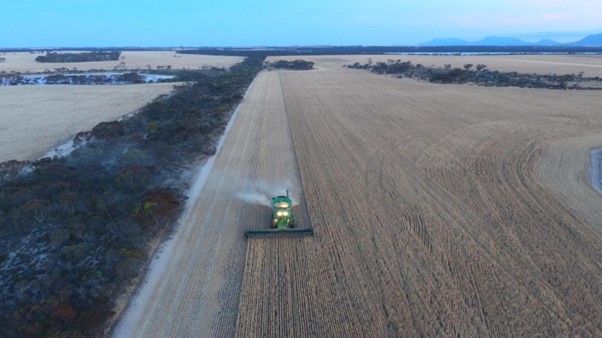For decades, growers across Australia have recognised the benefits of planting vegetation on the least profitable areas of their farms. These areas might be considered marginal or unarable, but they can still positively contribute to your bottom line.
Vegetation can provide benefits around decreased salinity and erosion, improved livestock welfare and crop yield increases, enhancing biodiversity and creating beneficial microclimates.
More recently, planting vegetation has also created opportunities through the Australian Carbon Credit Unit (ACCU) Scheme. By participating in the carbon market, you can gain new revenue streams, strengthen your market position, access emerging markets, and secure cheaper finance options.
The Six Key Benefits
1. New revenue streams and increased opportunities through carbon
With the rise of the carbon and nature markets, you can earn financial benefits by restoring vegetation and improving the condition of your land. Reforestation projects registered under the ACCU Scheme can generate tradable carbon credits (ACCUs). Once generated, you have three management options:
- You can sell them, providing an additional revenue stream for your farm and a return on investment.
- You can hold them as a future asset
- You can inset them into your farm, meaning that you are using self-generated ACCUs to reduce your farm’s emissions.
The ability to reduce and manage the emissions produced by your farm can then have further benefits to help you:
- Comply with emerging legislation.
- Maintain your current market access.
- Gain access to new, premium markets.
- Appeal to buyers seeking low-emission products.
- Qualify for low-interest loans from finance providers.
2. Improved Soil Health and Erosion Control
Australian soils are prone to erosion, which strips away valuable topsoil and nutrients. Vegetation helps stabilise the soil with their root systems, while their canopies reduce wind and water impact. Leaf litter adds organic matter, improving soil carbon, water retention and nutrient cycling, creating healthier, more productive soils.
3. Salinity and Groundwater Management
Dryland salinity continues to challenge WA farms, reducing yield and rendering land unproductive. Deep-rooted vegetation draws water from deeper in the soil profile, helping to lower the water table and prevent saline groundwater from rising. Well-placed vegetation can also improve drainage and reduce waterlogging in low-lying areas.
4. Microclimate regulation and potential rainfall impacts
Vegetation can impact local microclimates by moderating temperature, humidity and wind speed, benefiting both crops and livestock.
Emerging evidence suggests that vegetated areas can influence rainfall patterns. Studies along WA’s Rabbit-Proof Fence have shown that vegetated areas experience increased cloud formation and rainfall compared to cleared zones, highlighting how vegetation can have localised climate effects that may benefit farming operations .


5. Shade and shelter for livestock and crops
Vegetation provides valuable shelterbelts, protecting livestock from heat and cold stress. This improves fertility, birthweight, weaning weight, feed efficiency and overall production.
For crops, windbreaks reduce physical damage, help maintain soil moisture and reduce erosion, leading to higher yields and more stable production.
6. Biodiversity and ecosystem services
Historic land clearing has diminished native biodiversity on farms. Reintroducing vegetation helps restore these native ecosystems.
Native plantings which support pollinators have been shown to increase productivity, particularly in seed and fruit crops. Some studies have shown up to a 20% increase in seed crop yields, and over 30% increase in fruit yields where pollinator populations are supported by on-farm habitat.
In addition to these production gains, biodiversity adds value to carbon farming projects, with some markets offering price premiums for projects that deliver measurable environmental co-benefits.
Integrated, not isolated
With strategic planning and integration, vegetation plantings can not only support your business today but also strengthens and future-proofs it for tomorrow. Some benefits, like improved soil and animal welfare, can be seen quickly. Others, like changes in groundwater or biodiversity, may take longer.
Whether your focus is reducing erosion, boosting yields, earning ACCUs, or supporting biodiversity, vegetation can offer a practical, evidence-based path forward. The impact of vegetation often goes beyond your property, improving regional landscapes and climate resilience.
Support That Makes a Difference
Vegetation alone can deliver powerful outcomes, but registering a formal carbon project adds structure, credibility, access and profitability potential.
Navigating carbon may seem complex, but you don’t have to do it alone. At Planfarm TerraWise, we support you every step, from understanding opportunities for your business to planning, designing, implementing, and managing your carbon strategy. We are here to empower you to be able to confidently make decisions that will provide you with long-term benefits.
References


